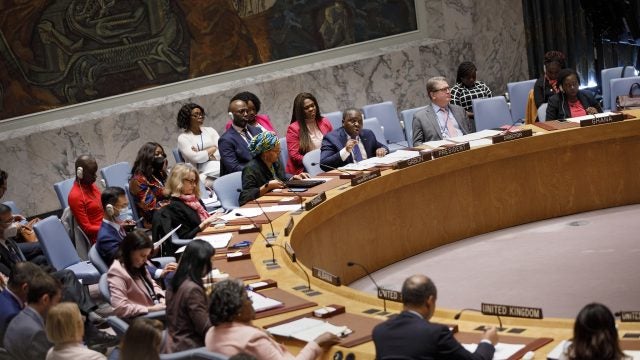
Title: What Good Is the Army? Social Bargains, Human Capital and the Future of Land Warfare
Will America’s strategic rebalancing towards the Asia-Pacific region mean the gutting of the US Army? The concern is that the forms of warfare for which the United States has most often employed its Army—combined arms maneuver to dominate an enemy and wide area security to hold territory—have become passé. The future of warfare is in the air and at sea, presumpresumably resulting from some conflict in East Asia. There is also very little stomach for another manpower-intensive counterinsurgency campaign, and there is a very low likelihood that another state will set its military toe-to-toe against US armed forces, since destroying those kinds of forces is exactly what US armed forces do best. It is thus worth asking, has warfare passed the US Army by?
The answer is no, but given the current fiscal environment, the US Army will undoubtedly shrink in size, and US Army missions will surely shift in focus. Still, the core US Army role of taking and holding territory—for extended periods of time, if need be—will come back again. The reason has to do with what political scientist Margaret Levi calls the “social bargain”, or the implicit agreement between rulers and ruled about how society should be run fairly. Rulers set the formal and informal rules for how society functions, including rules governing the extraction of resources from society, and in return for safety, prosperity, and equity those who are ruled agree to abide by the bargain. In most places in the world, most of the time, most people adhere to a social bargain of some sort, and most people are better off because of it.
The problem is that social bargains are not always stable, and this has implications for future warfare—the political reasons for war often have their genesis in relations between state rulers and society. So, if there are pathways that could lead to social instability, the US Army should take note, constituting as they do signposts of future warfare.
Power to the People. The first pathway to unstable social bargains is power accruing to those who are ruled. In order to maintain the social bargain, rulers must enforce rules, and if their ability to do so diminishes, then it could throw the basic rules of society into question. The proliferation of small arms and social media can shift this balance, as can the ease of movement across borders and organized criminal networks. For example, there was spillover from Libya to Mali, social media played a role in the Arab Spring, and small arms are moving into Syria. In small numbers, US Army officers are involved in building partner capacity—meant to stabilize allies—and if the conditions are right this involvement could increase dramatically.
Power of Information. The second pathway to unstable social bargains is increasing access to information. Information can destabilize existing social bargains if it undermines the norms of fairness upon which the arrangement between rulers and ruled is based. If the ruled learn that people elsewhere have a more equitable social bargain, then it could lead the first group to perceive their own social bargain as unfair, leading them to seek change. This sort of dramatic change goes beyond merely ousting a government; it means revamping the basic rules of society. One example might be Haiti in 1994. With activists and international organizations advocating for the protection of liberal values around the world, it is not unthinkable that the US Army would deploy to aid in some future crisis of illiberal governance.
Power to the Rulers. Another pathway to unstable social bargains is the empowerment of rulers. More readily available drone technology and persistent surveillance capabilities can help rulers monitor and enforce rules more effectively. The proliferation of increasingly powerful weapons, especially nuclear weapons, could embolden rulers to reexamine not only the social bargains with their own societies, but also other rulers’ control over neighboring societies. This pathway offers the greatest possibility of catastrophic surprise as well, such as with North Korea’s Kim Jong Un. The US Army has a significant presence on the Korean peninsula now, hedging against just such a surprise.
For the time being, none of these pathways appears poised to draw the US into a large-scale ground conflict, so the responsible approach for the near future would be to reduce the manning and funding of the US Army, perhaps dramatically. But this reduction must happen in a way that does not endanger the US Army’s most valuable defense against future uncertainty: its human capital. The reason human capital is so critical is that officers that can perceive when social bargains have become unstable are an early warning system against brewing crises. Education is what helped the US Army prepare so ably for World War II, and, ultimately, education is the surest way for the US Army to prepare for the land warfare that the nation cannot now foresee but will surely face in the future.
Dr. Nathan W. Toronto teaches military operations and strategy at the U.S. Army School of Advanced Military Studies, Fort Leavenworth, Kansas. The views expressed are entirely his own, and are not endorsed by the US Army, the Department of Defense or the US government. While he has never struck a social bargain himself, he does have experience bargaining in Middle Eastern souks and with his children, usually over throw rugs and the relative benefits of television versus doing chores.
Image Credit: Oliver Abels (SBT), CC BY-SA 3.0 <https://creativecommons.org/licenses/by-sa/3.0>, via Wikimedia Commons
This is an archived article. While every effort is made to conserve hyperlinks and information, GJIA’s archived content sources online content between 2011 – 2019 which may no longer be accessible or correct.
More News

This article explores the uncertain future of Arctic governance amid shifting global geopolitics. It argues that whether Washington and Moscow opt for confrontation or cooperation, multilateralism in the Arctic…

Twenty-five years ago, the United Nations Security Council adopted Resolution 1325, establishing a framework that underpins the Women, Peace, and Security (WPS) Agenda. The Resolution recognized both the…

When we analyze conflicts in the Middle East, we are not analyzing conflicts with isolated impacts but risks for global energy security. Recent conflicts in the Middle East have highlighted…